Address
304 North Cardinal
St. Dorchester Center, MA 02124
Work Hours
Monday to Friday: 7AM - 7PM
Weekend: 10AM - 5PM
Address
304 North Cardinal
St. Dorchester Center, MA 02124
Work Hours
Monday to Friday: 7AM - 7PM
Weekend: 10AM - 5PM

In recent years, the commercial air fryer market has experienced a remarkable surge in popularity, transforming the way kitchens around the globe approach frying and cooking. This surge isn’t just a fleeting trend; it represents a significant shift in the culinary landscape, driven by technological advancements, health-conscious consumers, and the demand for efficiency. This article delves into the factors contributing to the rising popularity of commercial air fryers, the innovations shaping their technology, the pivotal role of manufacturing factories, the trends and preferences driving the industry, case studies showcasing successful implementations, the challenges and solutions in production, and a forward-looking outlook on the market’s future.
The commercial air fryer market has experienced a surge in demand, as businesses and restaurants seek efficient and innovative cooking solutions. These fryers, known for their ability to offer a healthier alternative to traditional deep-frying, have quickly become a staple in the commercial kitchen landscape. From fast-food chains to gourmet restaurants, the versatility and benefits of commercial air fryers are becoming increasingly apparent.
These fryers utilize hot air to circulate around food, creating a crispy outer layer while significantly reducing the amount of oil needed. This not only cuts down on calories and fats but also on cleanup time, as there’s less oil to dispose of. The market for commercial air fryers is witnessing a steady growth, driven by health-conscious consumers and the need for cost-effective cooking methods.
One of the primary factors fueling this growth is the shift towards healthier eating habits. Consumers are more aware of the nutritional content of their meals, and restaurants are responding by offering lower-fat, heart-healthy options. Commercial air fryers fit perfectly into this trend, allowing establishments to serve dishes that are both delicious and nutritious.
The technology behind commercial air fryers has also seen significant advancements. Modern fryers are equipped with features like adjustable temperature controls, timer settings, and even smart technology that allows for remote monitoring and control. These innovations not only enhance the cooking experience but also simplify the operation for kitchen staff.
In the competitive landscape of commercial kitchen equipment, the role of the commercial air fryer factory is pivotal. These factories are responsible for the design, manufacturing, and distribution of air fryers that meet the stringent requirements of commercial kitchens. They must ensure that their products are durable, energy-efficient, and capable of handling the demands of high-volume cooking.
The market for commercial air fryers is diverse, with a wide range of products available to cater to different types of establishments. For instance, there are fryers designed for countertop use in smaller restaurants, as well as larger, more robust models that can handle the intense cooking requirements of busy commercial kitchens.
One of the key aspects that distinguish commercial air fryer factories is their ability to customize their products. Many factories offer tailor-made solutions, allowing customers to choose from various sizes, capacities, and additional features such as fan speed adjustments or even the ability to bake or grill food alongside frying.
As the market continues to grow, so do the trends that shape it. One notable trend is the emphasis on energy efficiency. Commercial kitchens are increasingly looking for ways to reduce their carbon footprint, and energy-efficient appliances like commercial air fryers are becoming a priority. These fryers not only save money on energy bills but also contribute to a greener planet.
Another trend is the integration of smart technology. As the world becomes more connected, kitchen appliances are following suit. Commercial air fryer factories are now incorporating features that allow for better kitchen management, such as data analytics that provide insights into energy usage and cooking times.
Despite the growth and innovation, the commercial air fryer market is not without its challenges. One of the main hurdles is the need for education and awareness. Many kitchen staff may be unfamiliar with the proper use of air fryers, and there’s a learning curve involved in adjusting recipes and cooking techniques to accommodate the new technology.
Commercial air fryer factories are rising to this challenge by offering comprehensive training programs and support services. By helping kitchen staff master the use of their products, these factories are not only ensuring customer satisfaction but also contributing to the overall success of the market.
Looking ahead, the future of the commercial air fryer market is bright. With continued advancements in technology and an ever-growing demand for healthier food options, commercial air fryers are poised to become an integral part of the commercial kitchen landscape. As these fryers evolve to meet the needs of a diverse range of businesses, the market is likely to see even greater expansion and innovation.

Commercial kitchens have seen a remarkable shift in recent years, with air fryers becoming an increasingly popular choice for chefs and restaurateurs alike. The rise in popularity can be attributed to a variety of factors that have made air fryers a game-changer in the culinary world.
The convenience and efficiency of air fryers have made them a staple in many commercial kitchens. These appliances use hot air to circulate around food, which helps to cook it quickly and evenly. This method not only reduces cooking time but also conserves energy compared to traditional frying, which can lead to significant cost savings over time. For busy kitchens striving to keep up with demand, the speed of air frying is a major draw.
Moreover, the health benefits offered by air fryers have not gone unnoticed. These appliances allow for the preparation of food with up to 80% less oil than traditional frying methods, which is a huge advantage for establishments that cater to health-conscious diners. Restaurants can now offer crispy, delicious dishes that are lighter on the hips without sacrificing flavor, all thanks to the technology inside their air fryers.
The versatility of air fryers is another reason for their surge in commercial kitchens. These appliances can handle a wide range of dishes, from appetizers like fries and onion rings to main courses such as chicken and fish. Their ability to crisp and brown food to perfection without the greasiness has opened up new possibilities for chefs, enabling them to experiment with recipes that were once impossible with less health-friendly cooking techniques.
Another factor contributing to the popularity of air fryers is their ease of use and maintenance. These units are designed to be simple to operate, with clear interfaces and user-friendly controls. Cleaning is also a breeze, as most air fryers are easy to disassemble and have non-stick surfaces that help prevent food from sticking.
The cost-effectiveness of air fryers is also a key consideration. Despite their initial higher investment, the long-term savings on cooking oil and reduced maintenance costs can more than justify the upfront price. For businesses operating on tight budgets or looking to reduce their carbon footprint, air fryers present a compelling option.
In the fast-casual and quick-service restaurant segments, the speed of air frying is a major selling point. It allows these establishments to serve large quantities of food quickly without compromising on quality. This efficiency has become particularly valuable as the demand for quick-service options has grown, with diners seeking faster and healthier alternatives to fast food.
The culinary innovation driven by air fryers has also led to a surge in product development. Manufacturers are constantly improving the design of air fryers, introducing features such as programmable settings, adjustable temperature controls, and even self-cleaning capabilities. These advancements cater to the evolving needs of chefs who are always on the lookout for the next big thing in kitchen technology.
The versatility of air fryers has not only expanded the menu options for commercial kitchens but has also allowed for the creation of unique dishes that differentiate a restaurant from its competitors. Chefs can now offer items that are traditionally fried in a healthier, more sustainable manner, giving them a competitive edge in the market.
Moreover, the trend towards sustainability and environmental consciousness has also played a role in the popularity of air fryers. As businesses strive to be more eco-friendly, the reduced oil usage and lower energy consumption of air fryers align with these values, making them an attractive choice for environmentally conscious operators.
The rise of social media and food blogs has also contributed to the increased visibility and appeal of air fryers. As influencers and food enthusiasts share their experiences and recipes using these appliances, the interest in air fryers has grown, encouraging more commercial kitchens to adopt the technology.
In conclusion, the increasing popularity of air fryers in commercial kitchens is a testament to their ability to meet the demands of today’s fast-paced, health-conscious dining culture. From efficiency and versatility to sustainability and cost savings, the benefits of air fryers are undeniable, making them a staple in modern commercial kitchens.
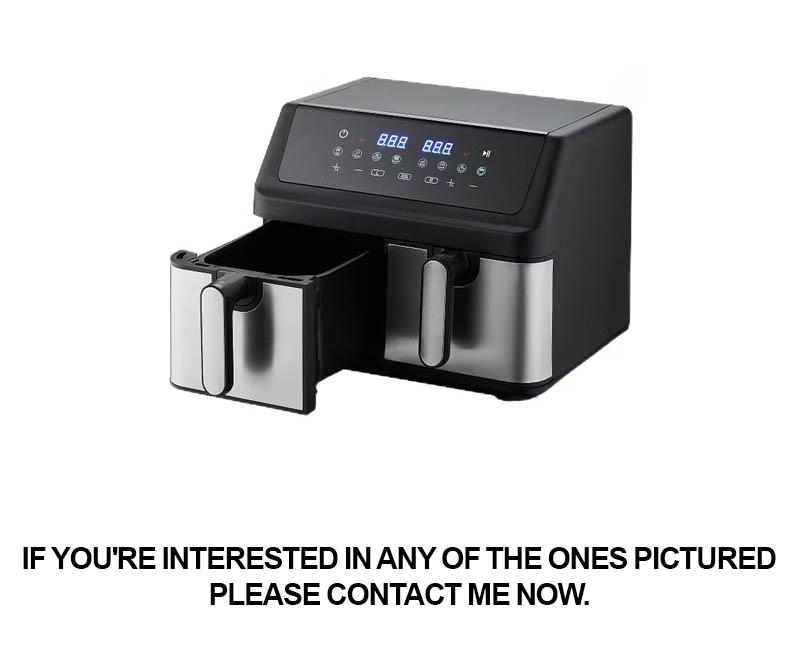
Commercial air fryers have revolutionized the culinary landscape, offering a healthier and more efficient alternative to traditional frying methods. These appliances have seen a surge in popularity among commercial kitchens for several key features and innovations that enhance their performance and versatility.
One of the standout features of modern commercial air fryers is their ability to mimic the frying process with minimal oil. By using a combination of hot air and rapid circulation, these fryers achieve a crispy texture similar to deep-fried foods while significantly reducing the fat content. This not only makes them a healthier option but also a more cost-effective one for businesses aiming to cut down on oil usage.
The technology behind these fryers has seen significant advancements. Many models now come with digital controls and precise temperature settings, allowing chefs to achieve consistent results every time. These precise controls are crucial for commercial kitchens where consistency is key to customer satisfaction.
Innovative heating elements are another highlight. Some commercial air fryers use a halogen heating element, which provides a more even distribution of heat compared to traditional electric fryers. This ensures that food is cooked evenly without hotspots, leading to a superior quality product.
The design of commercial air fryers has also evolved to accommodate larger batches and diverse types of food. Many units feature a spacious interior that can accommodate a variety of cooking needs, from fried chicken to vegetables. The ability to cook larger quantities in a single batch is particularly beneficial for busy kitchens that need to serve a high volume of customers.
Safety features have also been improved in recent years. Many models now come with automatic shut-off functions that activate when the fryer reaches a certain temperature or remains unattended for too long. This not only prevents accidents but also ensures that the kitchen staff can focus on other tasks without worrying about potential hazards.
Energy efficiency is a critical factor for commercial kitchens, and modern air fryers have made significant strides in this area. These fryers consume less energy than traditional fryers, which can lead to substantial savings on utility bills over time. The energy-efficient design also contributes to a greener kitchen operation, which is becoming increasingly important to environmentally conscious consumers and businesses.
One of the latest innovations in commercial air fryer technology is the inclusion of smart features. Some fryers can be controlled remotely through an app, allowing chefs to monitor and adjust cooking settings from anywhere in the kitchen. This not only adds convenience but also ensures that the food is cooked to perfection even when the chef is multitasking.
Another innovative feature is the inclusion of a filter system that helps to trap grease and food particles, making cleaning easier and more efficient. This is particularly beneficial in busy kitchens where time is of the essence, and maintaining a clean environment is crucial for food safety.
The ability to adjust cooking times and temperatures is also a key innovation. Some commercial air fryers offer programmable settings that can be tailored to specific recipes, ensuring that each dish is cooked to the perfect level of crispiness and doneness. This flexibility allows chefs to experiment with different cooking techniques and create a wider variety of menu items.
The development of multi-functional air fryers has also expanded the capabilities of these appliances. Many models now come with additional functions such as roasting, baking, and grilling, making them a versatile tool for a wide range of cooking tasks. This versatility is a significant advantage for kitchens looking to streamline their operations and reduce the need for multiple appliances.
In conclusion, the key features and innovations in commercial air fryer technology have made them an indispensable tool in the modern kitchen. From their health benefits and energy efficiency to their smart features and multi-functional capabilities, these fryers continue to evolve, offering commercial kitchens a competitive edge in the market.
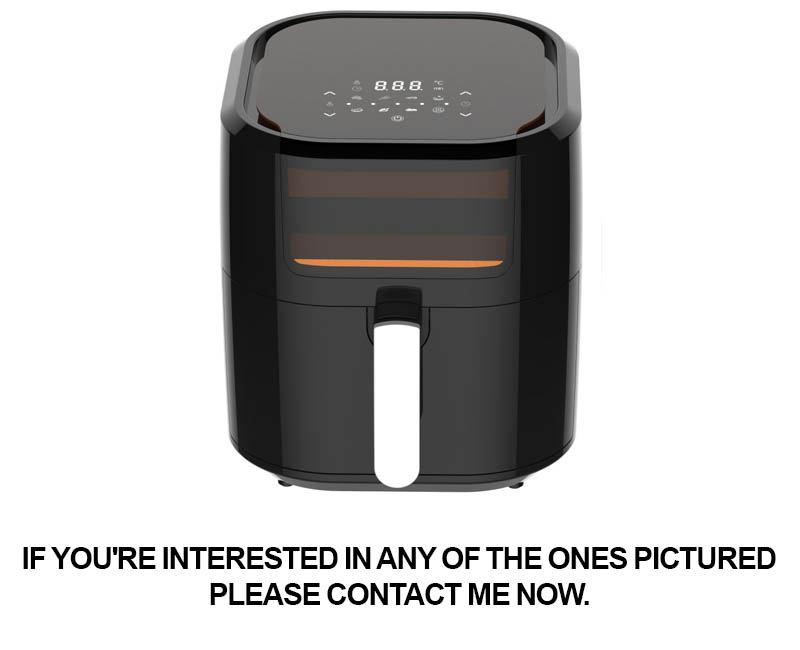
The commercial air fryer factory plays a pivotal role in the industry’s growth, acting as a cornerstone for innovation and efficiency. These factories are not just assembly lines but hubs of technological advancement and quality control. Let’s delve into the various aspects of their contribution:
Innovation in Design and Functionality: Commercial air fryer factories are at the forefront of design innovation. They develop fryers that are not only efficient but also user-friendly. From sleeker, more compact units to those with customizable temperature settings, these factories push the boundaries of what is possible in commercial kitchen appliances.
Energy Efficiency: As sustainability becomes a key concern, commercial air fryer factories are focusing on creating energy-efficient models. These fryers consume less electricity while maintaining the same frying capabilities, which is a significant advantage for businesses looking to reduce their carbon footprint and lower operational costs.
Quality Control and Standards: The factories adhere to stringent quality control measures to ensure that every air fryer that leaves the premises meets the highest standards. This includes rigorous testing for durability, safety, and performance, which is crucial for maintaining consumer trust and the brand’s reputation.
Customization and Tailored Solutions: Many commercial air fryer factories offer customization services, allowing businesses to tailor the fryers to their specific needs. Whether it’s a different size, additional features, or integration with other kitchen equipment, these factories can accommodate a wide range of requests, making their products versatile for various commercial settings.
Advanced Technology Integration: These factories are integrating cutting-edge technology into their air fryers. Features like digital displays, remote monitoring capabilities, and even predictive maintenance are becoming standard, offering kitchen managers real-time data and insights into the performance and maintenance needs of their fryers.
Global Supply Chain Management: Commercial air fryer factories often operate on a global scale, managing complex supply chains that span across continents. This involves sourcing high-quality components, managing logistics, and ensuring timely delivery to customers worldwide. Their expertise in supply chain management is crucial for the industry’s growth and market expansion.
Training and Support: A significant role of these factories is to provide training and support to end-users. This includes not only the installation of the fryers but also ongoing maintenance and customer service. By ensuring that customers know how to use their products effectively, these factories contribute to the success of businesses that rely on air fryers.
Regulatory Compliance: The factories must comply with various local and international regulations regarding food safety, electrical standards, and environmental protection. Their ability to navigate these regulations ensures that their products are not only innovative but also legally compliant.
Market Trends and Forecasting: By analyzing market trends and consumer demands, commercial air fryer factories can predict future industry needs. This foresight allows them to develop products that are ahead of the curve, keeping them competitive in a rapidly evolving market.
Sustainability Initiatives: As part of their commitment to the environment, these factories are increasingly adopting sustainable practices in their operations. This includes using eco-friendly materials, reducing waste, and exploring renewable energy sources.
In summary, the commercial air fryer factory is not just a manufacturer; it is a catalyst for innovation, a guardian of quality, and a facilitator of market growth. Its role is multifaceted, encompassing everything from design and technology to supply chain management and customer support, all of which are essential for the continued success and expansion of the commercial air fryer industry.
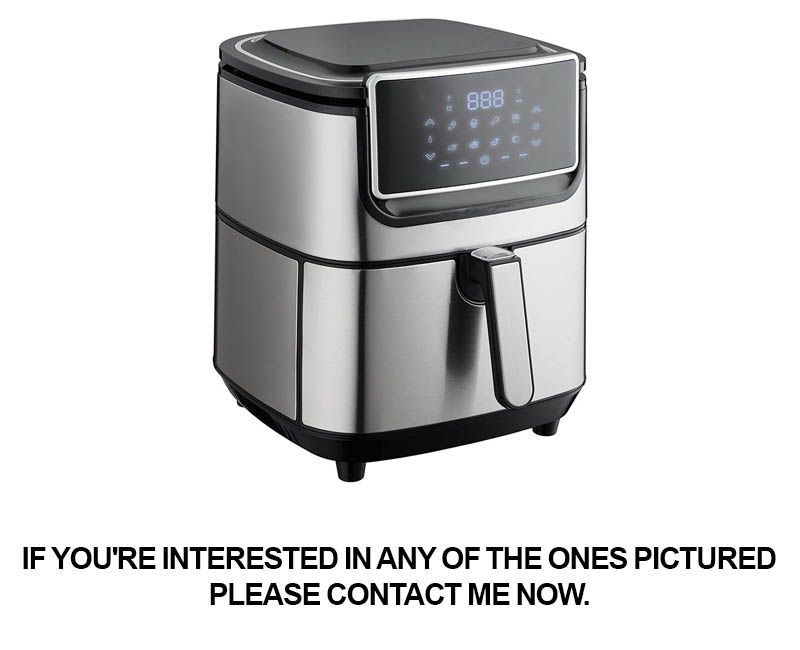
The commercial air fryer industry has seen a significant transformation over the years, driven by evolving market trends and consumer preferences. Here’s a closer look at how these factors are shaping the industry:
In recent times, there’s been a notable shift towards healthier eating habits. Consumers are increasingly conscious of the nutritional content of their food, leading to a demand for cooking methods that minimize the addition of unhealthy fats. Air frying has emerged as a popular choice due to its ability to cook food with minimal oil, making it a health-conscious consumer favorite.
The demand for convenience is at an all-time high, and commercial air fryers have risen to meet this need. These appliances are designed to reduce cooking times compared to traditional frying methods, allowing busy restaurants and commercial kitchens to serve meals faster without compromising on taste or quality.
Smart technology has become a game-changer in the commercial kitchen landscape. Air fryer factories are now integrating smart features into their products, such as touchscreens, timers, and adjustable temperature controls. These features not only enhance user experience but also improve the efficiency of kitchen operations.
Sustainability is a growing concern worldwide, and the commercial air fryer industry is responding with eco-friendly designs. From energy-efficient motors to recyclable materials, factories are focusing on reducing their environmental footprint, which resonates with consumers who are environmentally conscious.
The trend towards global cuisine has expanded the market for commercial air fryers. With the ability to mimic the cooking techniques of various cuisines, these appliances have become indispensable in diverse culinary settings. From crispy French fries to authentic Indian curries, air fryers are capable of replicating the textures and flavors that traditional frying methods provide.
Customization is key in the commercial kitchen equipment market. Factories are now offering a wide range of sizes, capacities, and features to cater to the specific needs of different businesses. This includes countertop models for smaller establishments and larger, industrial-grade fryers for busy restaurants and catering services.
As health trends continue to evolve, there’s an increasing focus on gluten-free and allergen-free options. Commercial air fryer factories are responding by producing models that can easily accommodate these dietary requirements, ensuring that a broader segment of the population can enjoy air-fried foods.
The rise of food delivery services has had a profound impact on the commercial air fryer market. Fast and efficient cooking is crucial for these services, and air fryers have proven to be a reliable solution. Factories are now producing air fryers that are not only suitable for in-house use but also designed to withstand the rigors of delivery operations.
Innovation in the commercial air fryer industry is not just limited to technology; it’s also about the variety of food items that can be cooked. From appetizers to desserts, air fryers are now capable of handling a wide array of recipes, making them a versatile choice for chefs and cooks alike.
The market for commercial air fryers is also being influenced by the rise of food innovation and fusion. Chefs are constantly looking for new ways to combine flavors and textures, and air fryers provide a platform for creative culinary exploration. Factories are supporting this trend by offering models that can handle the high temperatures and rapid cooking times required for innovative recipes.
Lastly, the industry is seeing a trend towards transparency and traceability. Consumers are interested in knowing where their food comes from and how it’s prepared. As a result, commercial air fryer factories are emphasizing the use of high-quality, traceable components, which not only builds trust with customers but also aligns with the broader movement towards ethical sourcing and production practices.
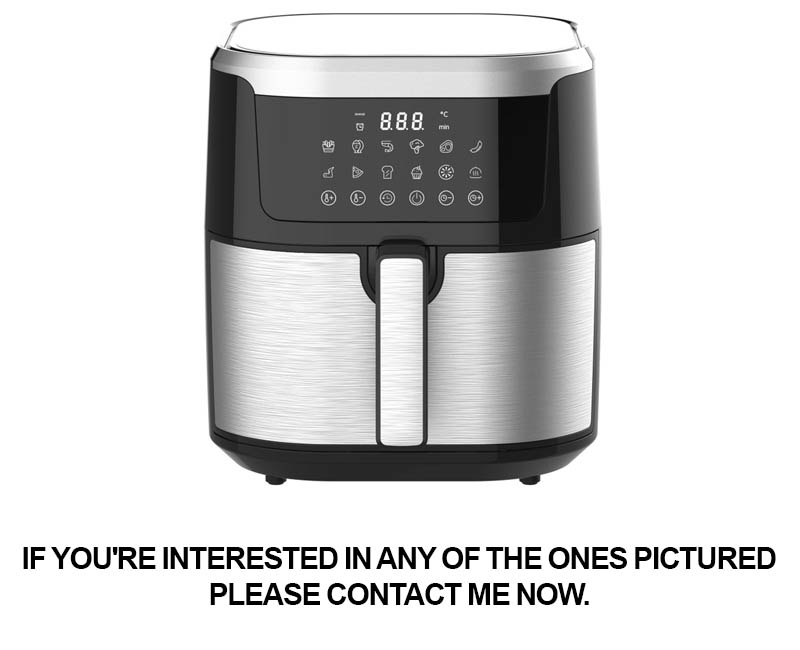
In the world of commercial kitchens, the adoption of air fryers has become a game-changer. Let’s delve into some compelling case studies that showcase the successful integration of commercial air fryers into various establishments.
At a bustling fast-food chain, the introduction of a commercial air fryer revolutionized their menu. The fryer’s ability to cook crispy fried items with minimal oil reduced their overall fat content by 80%, making their offerings healthier without compromising on taste. Customers responded positively, leading to increased sales and a boost in the brand’s image as a health-conscious option.
A local Italian restaurant embraced the commercial air fryer to prepare its signature garlic bread. The fryer’s precise temperature control ensured that the bread was crispy on the outside while maintaining a soft, chewy interior. The restaurant’s patrons were delighted with the lighter, healthier version of their favorite appetizer, and the kitchen staff praised the fryer’s efficiency and ease of use.
A mobile catering service found that the compact size and portability of a commercial air fryer were perfect for their needs. They used it to prepare a variety of fried snacks at events, from golden-brown mozzarella sticks to crispy onion rings. The fryer’s ability to cook multiple batches at once allowed them to serve large crowds quickly and maintain a high-quality product.
A vegan café in a hip neighborhood turned to a commercial air fryer to create a range of plant-based snacks. The fryer’s ability to replicate the texture of fried foods without the guilt of traditional deep-frying was a hit with their clientele. Items like vegan chicken tenders and tempura vegetables were a sensation, attracting both vegans and meat-eaters alike.
A sports bar upgraded its kitchen equipment with a commercial air fryer to cater to health-conscious patrons who still craved the taste of fried food. The fryer was used to cook wings, fries, and onion rings with a fraction of the oil, which was a hit during game nights. The bar’s owner reported that the fryer not only reduced the carbon footprint of the establishment but also increased customer satisfaction.
A gourmet burger joint incorporated a commercial air fryer into its kitchen to prepare gourmet sliders. The fryer’s ability to cook delicate items like gyoza without overcooking them was invaluable. The sliders were a hit, with customers raving about the tender, perfectly crisp crust on the dumplings.
A seafood restaurant in a coastal town used a commercial air fryer to offer a lighter, healthier alternative to deep-fried fish and chips. The fryer’s ability to crisp the batter without the greasiness was a game-changer. The dish was so popular that it became a seasonal special, drawing in both locals and tourists.
A school cafeteria replaced its deep fryers with a commercial air fryer to provide healthier options for students. The fryer’s ability to cook a variety of foods, from chicken strips to sweet potato fries, without adding excessive fat was a hit. The cafeteria staff noted a significant reduction in waste, as the fryer used less oil and required less frequent cleaning.
These case studies highlight the versatility and efficiency of commercial air fryers in a wide range of settings. From fast-food chains to gourmet restaurants, the adoption of these fryers is reshaping the industry, offering healthier options and improving operational efficiency.

The production process of commercial air fryers is a complex interplay of technology, design, and quality control. Here, we delve into the challenges faced and the innovative solutions that have been developed to ensure the success of these kitchen appliances.
In the meticulous design phase, engineers often encounter the challenge of balancing efficiency with size constraints. Space in commercial kitchens is precious, and the air fryer must be compact yet powerful enough to handle high-volume cooking demands. To address this, manufacturers are adopting modular design principles, allowing the fryer to be customized to fit various kitchen layouts without sacrificing performance.
Heat distribution is another critical concern. Traditional fryers can suffer from uneven cooking, leading to inconsistent results and potential food safety issues. Advanced heat exchange systems and smart temperature control technology have been integrated into commercial air fryers to ensure a consistent and uniform cooking environment. These systems monitor and adjust the air flow and temperature in real-time, reducing the risk of undercooked or overcooked food.
The durability of commercial air fryers is also a significant challenge, especially considering the rigorous conditions they often face in busy kitchens. Regular cleaning and exposure to heat and steam can take a toll on the appliance. To combat this, manufacturers are using high-quality, food-grade materials and corrosion-resistant finishes. Stainless steel is a common choice for its strength and resistance to rust, ensuring that the fryer withstands the test of time.
Energy efficiency is a growing concern for businesses looking to reduce their environmental footprint and operational costs. Traditional fryers can be energy-intensive, but modern commercial air fryers are designed to minimize energy use without compromising cooking performance. Smart modes and programmable settings allow operators to tailor energy consumption to their specific needs, optimizing energy use and reducing waste.
Safety features are paramount in commercial appliances, and air fryers are no exception. The risk of electrical hazards and fire must be meticulously managed. As such, commercial air fryer factories focus on incorporating advanced safety systems, including circuit breakers, overheating protection, and grounded components. Regular maintenance protocols are also established to ensure that these safety features remain functional throughout the appliance’s lifespan.
The production process itself presents challenges related to scalability and consistency. As demand for commercial air fryers grows, maintaining quality across a large volume of units can be difficult. To overcome this, factories implement rigorous quality assurance programs. This includes thorough testing of each unit for functionality, durability, and safety before it leaves the facility. Continuous improvement initiatives are also in place to refine production methods and keep up with evolving standards.
Another challenge is keeping up with the latest industry trends and customer expectations. Consumer demands for healthier cooking options are on the rise, and the commercial air fryer industry must respond accordingly. This often means incorporating new features or materials that align with these demands. Factories that excel in this area invest heavily in research and development to stay ahead of the curve.
The logistics of shipping and distribution can also pose challenges. Ensuring that each fryer arrives at its destination in perfect condition requires careful packaging and transportation protocols. Manufacturers must also consider the environmental impact of their shipping processes, looking for ways to reduce carbon emissions and waste.
In conclusion, the production of commercial air fryers is fraught with challenges that require innovative solutions. From design to distribution, each step in the process demands precision and a commitment to quality. By addressing these challenges head-on, factories are able to deliver products that not only meet but exceed the expectations of commercial kitchen operators worldwide.
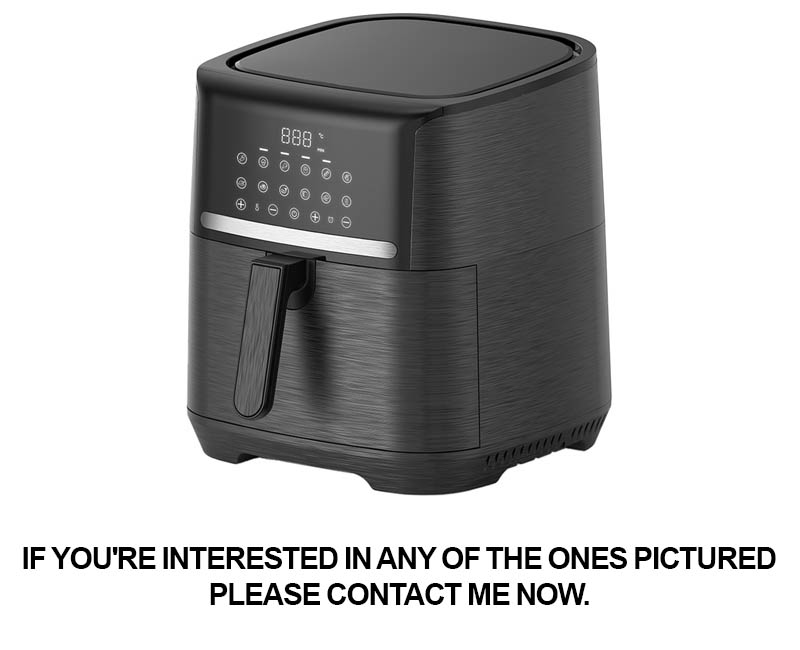
In the ever-evolving landscape of commercial kitchen equipment, the air fryer has emerged as a game-changer. Its ability to offer healthier fried food options while still satisfying the crave for crunch and flavor has propelled its demand in the market. Let’s delve into the future outlook for the commercial air fryer market, exploring predictions that could shape its trajectory.
The rise of health consciousness is a driving force behind the growing popularity of air fryers. As consumers seek out lower-calorie alternatives to traditional frying methods, the market for commercial air fryers is expected to expand. This shift towards healthier eating habits is not just a fad but a long-term trend that is likely to persist.
Technology continues to play a pivotal role in the air fryer market. With advancements in cooking technology, we can anticipate the integration of smart features in commercial air fryers. Imagine air fryers that can be controlled remotely, provide nutritional information, or even adjust cooking times and temperatures based on the type of food being prepared. These innovations could revolutionize the way commercial kitchens operate.
Energy efficiency is another key factor that will influence the future of the commercial air fryer market. As businesses strive to reduce their carbon footprint and operating costs, energy-saving appliances will become increasingly sought after. The development of more efficient air fryer models with better heat retention and lower energy consumption is not just a prediction but a necessity.
The market is also witnessing a surge in customization. Different types of cuisines require specific cooking techniques and temperatures. As a result, we can expect to see a variety of air fryer models tailored to meet the needs of different foodservice industries, from fast-food chains to gourmet restaurants.
Another trend to watch is the integration of air fryers with other kitchen appliances. Combining the functionalities of an air fryer with an oven or a steamer could offer chefs more versatility in their cooking methods. Such hybrid appliances could become the norm, allowing for a more streamlined and efficient kitchen setup.
Sustainability is a growing concern in the foodservice industry, and this extends to the manufacturing of kitchen equipment. The future of commercial air fryers may include more eco-friendly materials and manufacturing processes. From biodegradable packaging to recyclable components, the industry is likely to adopt more sustainable practices.
As the market for commercial air fryers expands, so does the need for robust after-sales support. This includes comprehensive training for staff, maintenance services, and quick replacements for faulty parts. Companies that invest in customer satisfaction and support will likely gain a competitive edge.
The global nature of the foodservice industry means that cultural preferences and dietary restrictions play a significant role in market trends. Air fryer manufacturers are likely to cater to these diverse needs by offering models that can accommodate various cooking styles and ingredients. This could mean everything from models that can handle gluten-free or paleo diets to those that are suitable for halal or kosher food preparation.
The rise of health-conscious consumers has also sparked an interest in the nutritional benefits of air-fried foods. Future air fryer models may come with built-in features that allow for the measurement and display of nutritional information, making it easier for customers to make informed choices.
In terms of pricing, while the initial cost of commercial air fryers may be higher than traditional fryers, the long-term savings on energy and oil could offset this. As the technology becomes more widespread, we can expect to see more affordable options entering the market, making air fryers accessible to a broader range of businesses.
Lastly, the future of the commercial air fryer market is closely tied to regulatory changes. As governments around the world implement stricter guidelines on food safety and health, air fryer manufacturers will need to ensure their products comply with these regulations. This could lead to a standardized approach to air fryer design and functionality, ensuring consistency across the market.
In conclusion, the commercial air fryer market is poised for significant growth, driven by a combination of health trends, technological advancements, sustainability concerns, and consumer preferences. As the industry continues to evolve, we can expect to see a variety of innovative solutions that cater to the dynamic needs of the foodservice sector.
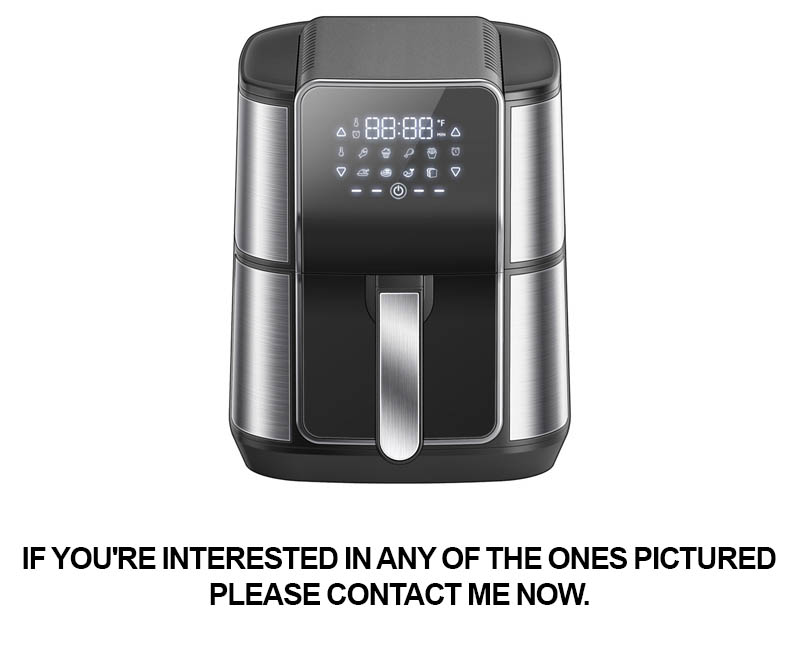
In the kitchen industry, commercial air fryers have emerged as a game-changer, offering a healthier alternative to traditional frying methods. These appliances are not just a trend; they represent a significant shift in how food is prepared and consumed. Here’s a look at the potential that commercial air fryers hold in the kitchen industry, reflecting on their current impact and future possibilities.
Commercial air fryers have become a staple in many professional kitchens due to their ability to produce crispy, golden-brown results without the excessive oil typically associated with deep-frying. This shift towards healthier cooking methods has been driven by both consumer demand and the industry’s need to innovate. The potential of these fryers lies in their versatility, efficiency, and the ability to meet the evolving health consciousness of diners.
One of the key factors that make commercial air fryers stand out is their ability to replicate the taste and texture of fried foods while reducing the fat content by up to 80%. This is achieved through the use of a circulating fan that distributes hot air around the food, creating a crispy outer layer and a tender interior. Such a feature is particularly appealing in fast-food and quick-service restaurants, where customers are increasingly looking for healthier options.
The compact size and energy efficiency of commercial air fryers also play a significant role in their potential. These units can be easily integrated into limited kitchen spaces, making them a practical choice for establishments that need to maximize their operational footprint. Additionally, the lower energy consumption compared to traditional fryers can lead to substantial cost savings over time.
Another aspect of commercial air fryers that adds to their potential in the kitchen industry is their ease of use and maintenance. The intuitive controls and digital displays make it simple for chefs to adjust settings and achieve consistent results. Furthermore, the non-stick surfaces and removable parts ensure that cleaning is quick and straightforward, further enhancing the practicality of these appliances.
Case studies of successful implementations of commercial air fryers in various kitchens highlight their effectiveness. For instance, a renowned fast-food chain replaced their deep-frying equipment with air fryers, leading to a noticeable reduction in the amount of oil used and a significant improvement in the nutritional profile of their menu items. This shift not only improved the company’s brand image but also attracted health-conscious customers, boosting sales.
The integration of commercial air fryers into commercial kitchens has also led to the development of new recipes and menu items. Chefs are experimenting with different ingredients and cooking techniques, pushing the boundaries of what can be achieved with this innovative technology. From gourmet snacks to health-focused meals, the potential for creativity is vast.
However, like any technological advancement, the commercial air fryer market faces challenges. One of the primary concerns is the initial cost of these appliances, which can be higher than traditional fryers. Despite the long-term cost savings, the upfront investment can be a barrier for smaller establishments or those operating on tight budgets.
Another challenge is the need for education and training. Chefs and kitchen staff must be familiar with the nuances of air frying to ensure that the food quality meets or exceeds customer expectations. This requires investment in staff training programs and sometimes the adjustment of existing recipes to accommodate the different cooking dynamics of air fryers.
In response to these challenges, manufacturers are continually working on solutions. They are developing more affordable models that can cater to a wider range of businesses. Additionally, they are offering comprehensive training packages and support to help kitchens transition smoothly to air frying technology.
Looking ahead, the future of the commercial air fryer market is promising. With advancements in technology, we can expect to see even more energy-efficient models that further reduce operational costs. The integration of smart features, such as remote monitoring and predictive maintenance, could also become more common, enhancing the efficiency of commercial kitchens.
The kitchen industry is dynamic, and consumer preferences are ever-changing. The potential of commercial air fryers lies in their ability to adapt to these changes. As health concerns continue to rise and diners seek out healthier options, air fryers are poised to play a central role in shaping the future of the kitchen industry. From reducing waste to increasing sustainability, the possibilities are vast, and the potential is undeniable.